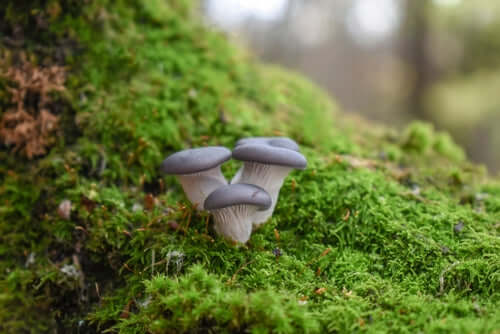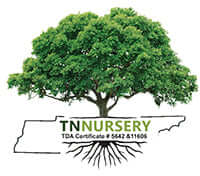
Native Mosses in the US: Ecosystem Contributions
Share
Moss Ecosystem Contributions and Adaptations
The United States has a rich and diverse ecosystem of native moss species, each with unique characteristics and ecological roles. From the dense woodlands of the Pacific Northwest to the arid deserts of the Southwest, these tiny, often overlooked plants play a crucial role in maintaining the health of their respective environments. In this exploration of the world of exotic native mosses in the U.S., we will delve into the fascinating lives of Carpet Moss, Mood Moss, Lawn Moss, Cushion Moss, Sheet Moss, Fern Moss, Broom Forkmoss, and Reindeer Moss.
Carpet Moss (Hylocomium splendens):

Carpet Moss, also known as Splendid Feather Moss, is an enchanting and intricate species that creates a stunning tapestry of lush green carpets on the forest floor. Found primarily in the northern regions of the United States, including Alaska, this moss thrives in calm and moist environments. Its feather-like fronds are incredibly delicate and create a soft, inviting carpet that beckons one to touch and explore its beauty. It is a visual delight, and Carpet Moss provides essential habitat and moisture retention for various tiny creatures, making it an indispensable component of the forest ecosystem.
Carpet Moss is known for its exceptional ability to absorb and retain water, making it an essential component of the forest's hydrological cycle. Its presence aids in preventing soil erosion and keeping a steady dampness level in the soil, which is crucial for the survival of other plant species and wildlife.
Mood Moss (Dicranum scoparium):
Mood Moss, commonly known as Broom Fork Moss, is a fascinating and versatile species in various habitats across the United States. Its unique appearance, characterized by tightly packed fronds that resemble a broom, makes it easily identifiable. The fronds are thin and elongated, with a delicate texture that gives the moss a feathery look. One of the most captivating features of Mood Moss is its ability to change color depending on its moisture content. When it's dry, the moss takes on a crisp, brownish hue, but it transforms into a bright, vivid green when it's wet. This remarkable quality gives Mood Moss a moody and ever-changing appearance that is truly captivating.
One of the fascinating aspects of Mood Moss is its role in providing habitat for a wide array of invertebrates. The dense, interlocking fronds create a microenvironment that offers shelter and protection to small insects and spiders. Additionally, it contributes to nutrient cycling by trapping and breaking down organic matter, enriching the forest soil.
Exploring the Diverse World of Native Mosses in the United States
Lawn Moss (Bryum argenteum):
Lawn Moss, also known as Silver Moss, is a diminutive yet robust species with a remarkable ability to colonize various environments, including urban areas. It is often found in lawns, gardens, and even cracks in sidewalks. Lawn Moss gets its name from its low, creeping growth habit, which resembles a miniature, silvery-green lawn.
While some may consider Lawn Moss a nuisance in their carefully manicured lawns, it serves a valuable ecological role. It helps to stabilize soil, reduce erosion, and create microclimates for other plants and organisms. Its small, silver-green leaves testify to its adaptability and resilience in harsh urban conditions.
Cushion Moss (Leucobryum glaucum):
Cushion Moss, also known by its enchanting name of White Moss, is a captivating and intriguing species that thrives in various forested environments. This delightful moss creates dense, cushion-like tufts that are a sight to behold. It is commonly found in moist, shaded areas and is known for its distinctive, pale-green appearance that exudes an air of serenity and tranquility.
The name "White Moss" is derived from the silvery-white hairs that cover its leaves, giving it a frosty, ethereal quality that almost seems to glow in the right light. These tiny, delicate hairs create a soft, velvety texture that is a delight to touch. The White Moss is a stunning natural beauty and a true wonder to behold.
One of the most remarkable features of Cushion Moss is its capacity to sponge and retain moisture like a sponge. This moss can hold several times its weight in water, making it a critical component of the forest's water cycle. It provides a constant source of moisture for other plants and creates a hospitable environment for various tiny organisms.
Sheet Moss (Hypnum curvifolium):
Sheet Moss, called Creeping Hypnum, is a widespread and adaptable moss that forms intricate green sheets on rocks, logs, and soil surfaces. It can be found throughout the United States and is known for its finely branched, feathery fronds. The name "Sheet Moss" is derived from its growth habit, which creates a thin, sheet-like layer over substrates.
Sheet Moss is vital in preventing soil erosion, especially in areas with steep terrain. Its dense growth and ability to anchor itself to various surfaces make it an effective soil protector beneath. Additionally, it provides hiding places and nesting sites for small wildlife, contributing to the overall biodiversity of its habitat.
Fern Moss (Thuidium delicatulum):
Fern Moss, also known as Delicate Fern Moss, is a charming and graceful species found in moist woodlands and shaded rocky outcrops across the United States. Its name, "Fern Moss," is derived from its finely dissected, fern-like fronds that create an intricate and delicate appearance.
One of the unique qualities of Fern Moss is its adaptability to changing environmental conditions. It can thrive in humid and drier areas, making it versatile in various ecosystems. Its presence helps maintain soil moisture and provides shelter for small invertebrates, contributing to the overall health of its habitat.
Broom Forkmoss (Dendroalsia abietina):
Broom Forkmoss, also known as Tree Forkmoss, is a striking and arboreal moss species often found growing on tree branches in moist, coniferous forests. Its distinctive appearance includes long, sweeping branches that resemble miniature brooms. This moss species thrives in the cool, humid climate of the Pacific Northwest and other northern regions of the United States.
The presence of Broom Forkmoss on tree branches not only adds to the aesthetic beauty of the forest but also serves essential ecological functions. It can capture moisture from the air and rain, providing additional hydration to the surrounding flora and fauna. Furthermore, it creates a microhabitat for epiphytic plants and small animals.
Preserving the Fragile World of Native Mosses
Reindeer Moss (Cladonia rangiferina):

Reindeer Moss is an iconic and widespread moss-like lichen in various ecosystems, including the United States arctic tundra, boreal forests, and alpine regions. Despite its name, Reindeer Moss is not a moss but a lichen composed of a mutualistic relationship between a fungus and an alga.
Reindeer Moss is of particular significance to indigenous cultures and wildlife. In northern regions, it serves as a primary food source for reindeer, caribou, and other herbivores during the harsh winter when other vegetation is scarce. Its ability to withstand extreme cold and desiccation makes it a resilient and vital component of these ecosystems.
In conclusion, the world of exotic native mosses in the United States is a fascinating and often overlooked realm of biodiversity. Each moss species, from Carpet Moss to Reindeer Moss, plays a unique and crucial role in its respective ecosystem, whether by stabilizing soil, providing habitat, retaining moisture, or serving as a vital food source. These tiny, resilient plants remind us of the intricate web of life beneath our feet and the importance of preserving the diversity of nature's wonders.
